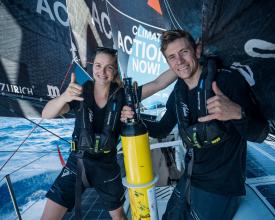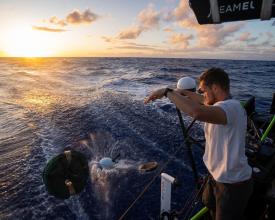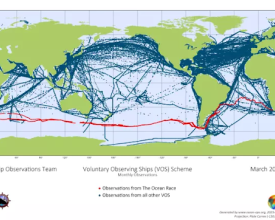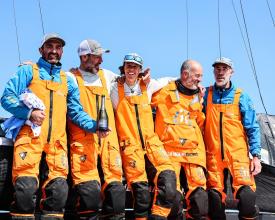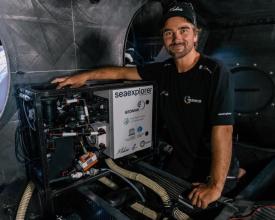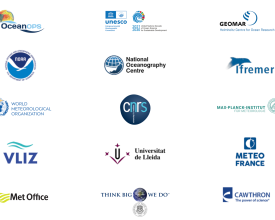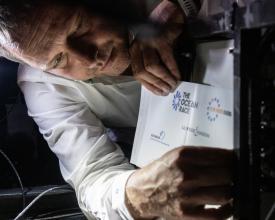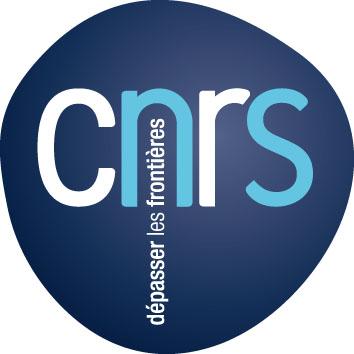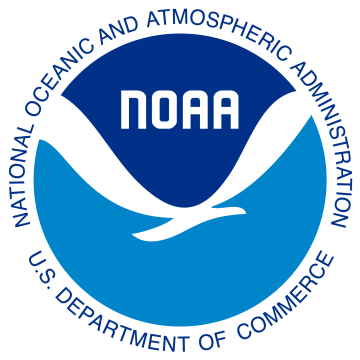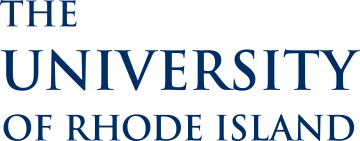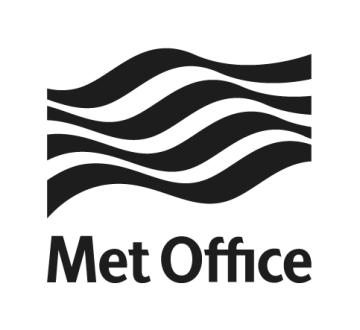
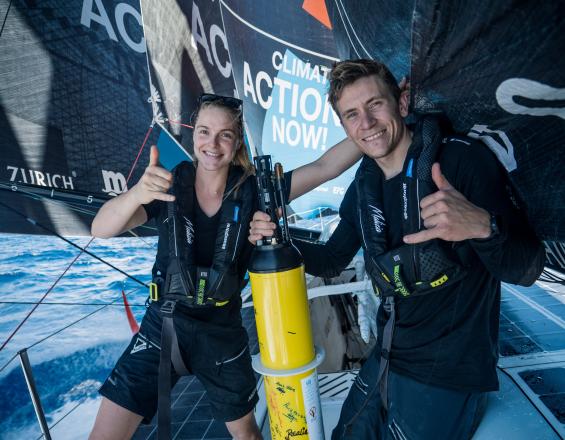
La Ocean Race es el desafío oceánico definitivo: una vuelta al mundo a vela por algunas de las aguas más remotas del planeta. Las raíces del programa científico de la regata se remontan a 2001, cuando los sensores de a bordo captaban datos de las aguas superficiales. En 2015, los equipos desplegaron por primera vez boyas de deriva.
Uno de los objetivos clave de la regata, además de la excelencia atlética, es avanzar en el conocimiento y recopilar datos sobre la salud de los océanos. Esto se considera especialmente valioso para los científicos porque los equipos recopilan información de zonas del océano a las que los buques de investigación rara vez acceden, lo que ayuda a colmar lagunas de conocimiento críticas. Las áreas de interés de la regata 2022-23 incluyen la medición de datos meteorológicos, parámetros oceánicos esenciales y contaminación por microplásticos, así como el despliegue de boyas de deriva de superficie y flotadores Argo, la protección de la megafauna marina y la investigación de la biodiversidad oceánica. Los datos recogidos son de código abierto y se comparten con los socios científicos de la regata, con los que se elaboran informes que informan e influyen en la política y los objetivos climáticos.
Contexto
Défis à relever
La Ocean Race recoge datos sobre dos de las amenazas más importantes para los océanos: el cambio climático y la contaminación por microplásticos. Los datos de muestreo a bordo, meteorológicos y de boyas de deriva contribuyen a hacer predicciones más precisas sobre el tiempo, el clima y la salud de los océanos.
La falta de mediciones directas de las variables medioambientales y oceanográficas en zonas con escasez de datos afecta a la fiabilidad de las predicciones y las simulaciones de modelos. Los barcos de regatas, también conocidos como "buques de oportunidad", facilitan esta medición directa de las condiciones oceánicas más allá de las rutas rutinarias de investigación y navegación, contribuyendo a colmar lagunas críticas de conocimiento y a avanzar en nuestra comprensión del océano y del cambio climático.
Las iniciativas de recogida de datos de la Ocean Race también abordan la relativa falta de conocimientos sobre el alcance y la naturaleza de la contaminación por microplásticos en el océano. Los datos recogidos por los barcos representan importantes datos de referencia y la regata también facilita el ensayo de sistemas de muestreo científico resistentes que pueden transportarse y desplegarse en los barcos
Ubicación
Procesar
Resumen del proceso
Celebrar una regata alrededor del mundo es una premisa para navegar por algunos de los rincones más remotos del planeta. Comprender que esto puede beneficiar a la comunidad científica al proporcionar tanto un medio para acceder a los océanos como un vehículo para desplegar instrumentos de medición, permite la colaboración y la creación de asociaciones entre las partes interesadas en la regata y la comunidad científica. Exigir a los equipos y a los deportistas que apoyen y participen en la investigación científica a través de la Carta de Sostenibilidad y el Código de Conducta de los Equipos de la Ocean Race garantiza que esta colaboración se integre en la regata.
Mientras que los barcos proporcionan los medios para probar nuevas tecnologías y técnicas de muestreo, la colaboración con los socios científicos proporciona la tecnología y los conocimientos necesarios para recopilar y analizar los datos pertinentes. Sin los conocimientos y la experiencia que aportan los socios científicos, y sin su capacidad para evaluar e informar sobre los resultados, no sería posible recopilar datos significativos, ni compartir y difundir los resultados a las audiencias y partes interesadas pertinentes. La asociación con instituciones científicas garantiza una recopilación de datos de calidad y la credibilidad necesaria para fundamentar la investigación y la política.
Bloques de construcción
Un hipódromo único que permite acceder a zonas geográficamente extremas y con escasez de datos en todos los océanos del planeta.
La premisa subyacente de The Ocean Race -competir para dar la vuelta al mundo- significa que la regata lleva naturalmente a los competidores a algunas de las zonas más remotas del planeta. Esto la convierte en una plataforma única para llevar a cabo investigaciones científicas, ya que permite a los científicos acceder a zonas remotas, como el Océano Antártico, que de otro modo serían raramente accesibles. Los buques que navegan fuera de las rutas marítimas regulares desempeñan un papel esencial en la capacidad de desplegar instrumentación científica, como las boyas de deriva y los flotadores Argo que se despliegan durante la regata, en lugares insuficientemente muestreados. Esto ofrece oportunidades únicas para recopilar datos de partes del planeta en las que se ha registrado poca información, lo que convierte a la regata en una plataforma crucial para recopilar datos que de otro modo serían inalcanzables y colmar lagunas de información, contribuyendo así a mejorar nuestro conocimiento de los océanos.
Factores facilitadores
- La premisa subyacente de The Ocean Race -circunnavegar el mundo lo más rápido posible- significa que la regata llevará invariablemente a los barcos a zonas en las que se navega con poca frecuencia.
- El diseño de la ruta de la regata (etapas, escalas, etc.) determinará el destino de los barcos.
- Los veleros de regata permiten acceder a algunos de los mares más remotos del planeta, así como a zonas situadas fuera de las rutas habituales de navegación e investigación.
Lección aprendida
El recorrido de la regata, con escalas en distintos países, planteaba retos logísticos en cuanto al transporte de equipos científicos a los puertos de escala, así como el envío de muestras, material e instrumentos de vuelta a los socios científicos. Por ejemplo, los envíos estaban sujetos a diferentes condiciones de importación y derechos de aduana en función de su país de origen y destino.
Colaborar con las instituciones científicas locales ayudó con el equipo, transportarlo en persona y trabajar diligentemente con las aduanas antes, durante y después del transporte. La logística de un experimento científico internacional debe estar bien planificada de antemano y todas las gestiones relacionadas con el envío de equipos, muestras, etc. deben hacerse con antelación.
Establecer un reglamento de regatas que sitúe la ciencia en el centro de las actividades de competición.
La Carta de Sostenibilidad y el Código de Conducta de los Equipos de la Ocean Race se crearon conjuntamente con los equipos para expresar el compromiso de toda la flota con las operaciones sostenibles y el apoyo a un océano sano. La carta incluye temas de defensa, ciencia, aprendizaje y operaciones. Su objetivo es conseguir que todos los equipos, el personal y los regatistas defiendan el océano a través de la navegación sostenible, el equipo y las acciones personales.
En el ámbito científico, los equipos deben comprometerse a:
- Apoyar la toma de decisiones basadas en la ciencia.
- Participar en el aumento del conocimiento y la comprensión de nuestro océano.
- Albergar equipos científicos a bordo.
- Participar en programas de ciencia ciudadana.
- Contribuir a la Década de las Ciencias Oceánicas de las Naciones Unidas en colaboración con The Ocean Race.
Incluir la ciencia en una carta y exigir a los participantes que lleven a cabo diversas actividades relacionadas con la ciencia mientras compiten en una regata de vela integra la ciencia, como valor fundamental, en las prácticas de la regata. Se trata de algo único en el mundo del deporte, ya que exige a los equipos y a los atletas que asuman responsabilidades medioambientales además de las deportivas.
Factores facilitadores
- Conciencia del cambio climático y de la importancia y fragilidad de los océanos.
- Deseo de proteger los océanos y el "hipódromo" de la vela.
- Comprensión de la importancia de la recopilación de datos para la ciencia del clima y los océanos.
- Deseo de utilizar la vela y las regatas más allá de los objetivos deportivos, como plataforma para la investigación científica.
Lección aprendida
La colaboración es clave, todos deben participar y ser responsables de un futuro mejor para todos.
El compromiso con los equipos, los socios y las ciudades anfitrionas debe establecerse desde el principio y es necesario apoyarles en su camino, no como una ocurrencia tardía o un añadido de última hora. En cada equipo debe haber una persona dedicada a la sostenibilidad y al mantenimiento de la Carta de Sostenibilidad dentro de su equipo y departamento. Es importante no subestimar la cantidad de trabajo necesario para mantener la Carta de Sostenibilidad y nuestros objetivos de sostenibilidad.
En un evento como The Ocean Race, también hay desafíos debido a circunstancias impredecibles como reparaciones de barcos por desarboladuras o colisiones que pueden aumentar la huella y el impacto medioambiental del equipo y de la regata. Es importante contar con cierta capacidad extra y contingencias para compensar circunstancias imprevistas como éstas.
Colaboración y asociación con la comunidad científica y las instituciones científicas
El Programa Científico de la Regata Oceánica se lleva a cabo en colaboración con varios socios científicos, reuniendo a organizaciones y equipos para ser pioneros en nuevos enfoques de recogida de datos, avanzar en la tecnología para contribuir a la cartografía mundial de datos estandarizados, y aumentar nuestro conocimiento de los océanos y sus relaciones con el cambio climático. Proporciona una ampliación única y prometedora de las redes de observación y permite el desarrollo de nuevas tecnologías de muestreo (por ejemplo, OceanPack-RACE, desarrollado según las especificaciones de marineros y científicos).
Las asociaciones con la comunidad científica permiten que los datos recogidos por los barcos de regata sean procesados y sometidos a un control de calidad por los socios científicos, y luego puestos a disposición a través de bases de datos mundiales de código abierto. Las bases de datos incluyen, entre otras, la Red Europea de Observación y Datos Marinos (EMODnet) y el Atlas del CO2 en la superficie de los océanos (SOCAT), que sirve de base al Presupuesto Mundial del Carbono y a su vez a las proyecciones y objetivos medioambientales. El despliegue de boyas de deriva, operadas por Météo France, contribuye al programa de boyas de deriva de la Administración Nacional Oceánica y Atmosférica (NOAA).
Factores facilitadores
- Las ventajas únicas que ofrece la regata: el recorrido de la regata por rincones remotos del mundo, así como los yates de regata como vehículos para emplear tecnología científica de muestreo y medición.
- El interés y el deseo de los organizadores y las partes interesadas (equipos, atletas, etc.) de contribuir a la investigación científica.
- Apreciación por parte de la comunidad científica de las oportunidades que ofrece la Ocean Race para la investigación científica.
- Diversidad de los participantes en la regata y de los científicos implicados.
Lección aprendida
Se están manteniendo conversaciones con socios y empresas de nueva creación a raíz de los comentarios recibidos sobre el uso de plástico para construir boyas de deriva y la dificultad de recuperarlas al final de su vida útil. El objetivo sería desplegar instrumentos degradables en el agua o recuperables.
Recogida de datos en veleros de regata para muestreo a bordo y despliegue de boyas de deriva.
Además de facilitar el acceso a lugares de difícil acceso, los veleros también constituyen medios de transporte útiles para desplegar instrumentación científica. Los veleros pueden transportar equipos científicos, tanto para su despliegue en el océano como para su medición continua mediante sensores instalados permanentemente a bordo. La velocidad de las embarcaciones de regata permite obtener datos de distintos lugares en cortos periodos de tiempo, algo que no pueden hacer la mayoría de los buques de investigación. Los yates también pueden utilizarse para pilotar y probar nuevas tecnologías y técnicas de investigación, como la tecnología que permite compartir los resultados en tiempo real y el OceanPack, un dispositivo que registra datos oceánicos esenciales desde a bordo de los yates.
En el contexto de una regata, llevar dispositivos que realizan mediciones meteorológicas no sólo es beneficioso para los socios científicos, sino también para los propios participantes en la regata, ya que ayuda a informar y mejorar las previsiones meteorológicas que repercutirán en su propia toma de decisiones y en su rendimiento a lo largo de la regata.
El uso de veleros de regata para la recogida de datos allana el camino para la instalación y el despliegue de dispositivos de medición en otras embarcaciones, como barcos pesqueros o comerciales, así como otros veleros.
Factores facilitadores
- En los veleros pueden instalarse sensores e instrumentos científicos.
- Las altas velocidades que alcanzan los veleros permiten recoger datos en cortos periodos de tiempo.
- Los barcos pueden llegar a lugares específicos para desplegar boyas de deriva o flotadores Argo.
Lección aprendida
Los dispositivos científicos se diseñaron originalmente para su uso en grandes buques de investigación o comerciales. Esto planteó algunos problemas técnicos en cuanto a su uso e instalación a bordo de yates de regatas, que quedan fuera del ámbito de sus aplicaciones previstas. Al tratarse de barcos de regatas, los dispositivos debían ser resistentes y ligeros.
Los dispositivos de muestreo debían funcionar en un entorno con fluctuaciones del suministro eléctrico, exposición constante a humedad corrosiva y en el que los operadores (es decir, los equipos y los atletas) sufren un enorme estrés físico (y psicológico). Por ello, los dispositivos debían ser fáciles de usar y sencillos de manejar, para que personas con poca formación especializada pudieran utilizarlos con eficacia y eficiencia en condiciones de estrés y presión. La Ocean Race colabora con los fabricantes para hacer avanzar la tecnología y mejorar su fiabilidad para usos futuros.
Compartir datos en apoyo de la ciencia y la política
Los datos recogidos por los barcos de regata contribuyen a comprender el complejo sistema oceánico mediante el registro de mediciones directas de alta calidad. Los datos meteorológicos y oceanográficos recogidos por los sensores embarcados (OceanPack y estaciones meteorológicas), las boyas de deriva y los flotadores Argo se transmiten a los socios científicos en tiempo real vía satélite. Aunque los datos por sí solos son útiles, su pleno potencial para el avance de la climatología surge cuando pueden combinarse con datos ya existentes e integrarse en modelos y evaluaciones. Compartir los datos con la comunidad científica facilita el control de calidad y la síntesis en productos de datos útiles.
La colaboración con instituciones medioambientales clave significa que los datos recogidos pueden contribuir a bases de datos mundiales de código abierto como el Atlas del Carbono Oceánico en Superficie (SOCAT), la Base de Datos Mundial sobre los Océanos NOAA NCEI, el Programa Mundial de Basuras Marinas del PNUMA, el Servicio Marino Copernicus y la Red Europea de Observación y Datos Marinos (EMODnet).
Los datos agregados pueden utilizarse para evaluar, cartografiar y modelizar problemas acuciantes como la contaminación por plásticos, la temperatura de los océanos o el estado de los entornos marinos. Los datos también contribuyen a evaluaciones e informes científicos que sustentan políticas medioambientales clave como el Presupuesto Mundial del Carbono, el Marco de las Naciones Unidas sobre el Cambio Climático o el Tratado sobre el Plástico.
Factores facilitadores
- Tecnología que permite compartir datos en tiempo real.
- Hacer que los datos recopilados sean de código abierto garantiza que sean accesibles para todos, promoviendo el uso más amplio e impactante de los datos para hacer avanzar la ciencia del clima.
- Las asociaciones con la comunidad científica permiten que los datos se incluyan en bases de datos y sean accesibles a quienes puedan utilizarlos en todo su potencial.
- Compartir datos con organizaciones que examinan el impacto de la actividad humana en el océano significa que pueden incorporarse a informes y bases de datos que informan e influyen en la política y los objetivos medioambientales.
Impactos
El programa obtuvo una mayor aceptación entre la comunidad náutica y sensibilizó a nuestros patrocinadores (bucle de retroalimentación positiva).
nuestros patrocinadores (bucle de retroalimentación positiva). Tuvimos la oportunidad de diversificar el equipo y explorar enfoques avanzados. Por ejemplo, el barco de Biotherm desplegó un citómetro de flujo (básicamente un microscopio automático con una bomba de agua). Además, realizamos pruebas de un innovador muestreador de oligoelementos en el Team Malizia y en el 11th Hour Racing Team, e introdujimos un novedoso muestreador de eDNA en el 11th Hour Racing Team. El programa científico de The Ocean Race recogió más de 4 millones de puntos de datos durante los 7 meses de regata. Los resultados obtenidos por nuestros socios científicos se incorporan a informes vitales que se utilizan para informar e influir en las decisiones importantes de los gobiernos de todo el mundo, incluidas las publicaciones del Grupo Intergubernamental de Expertos sobre el Cambio Climático (IPCC), y bases de datos como el Atlas de Dióxido de Carbono en la Superficie del Océano, que proporciona información para el Presupuesto Global de Carbono, una evaluación anual de dióxido de carbono que informa sobre los objetivos y las predicciones para la reducción de carbono. El programa científico de la Ocean Race forma parte del proyecto Odisea de la Década Oceánica. El programa científico proporcionó historias atractivas para los medios de comunicación de todo el mundo. El programa y sus resultados recibieron cobertura en medios de calidad como BBC News Online, Sky News, The Guardian y Al Jazeera.
Beneficiarios
Todos los datos recogidos se comparten con los socios científicos de The Ocean Race, que son organizaciones líderes mundiales dedicadas al estudio de los efectos de la actividad humana sobre el océano y la atmósfera. Estas colaboraciones
representan una situación beneficiosa para todos.
Objetivos de Desarrollo Sostenible
Historia
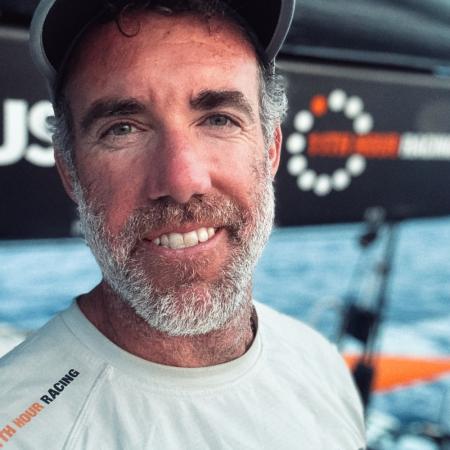
Primera toma de muestras de ADN electrónico a bordo de un barco de regatas
https://www.youtube.com/watch?v=RukDm4hz-c4

